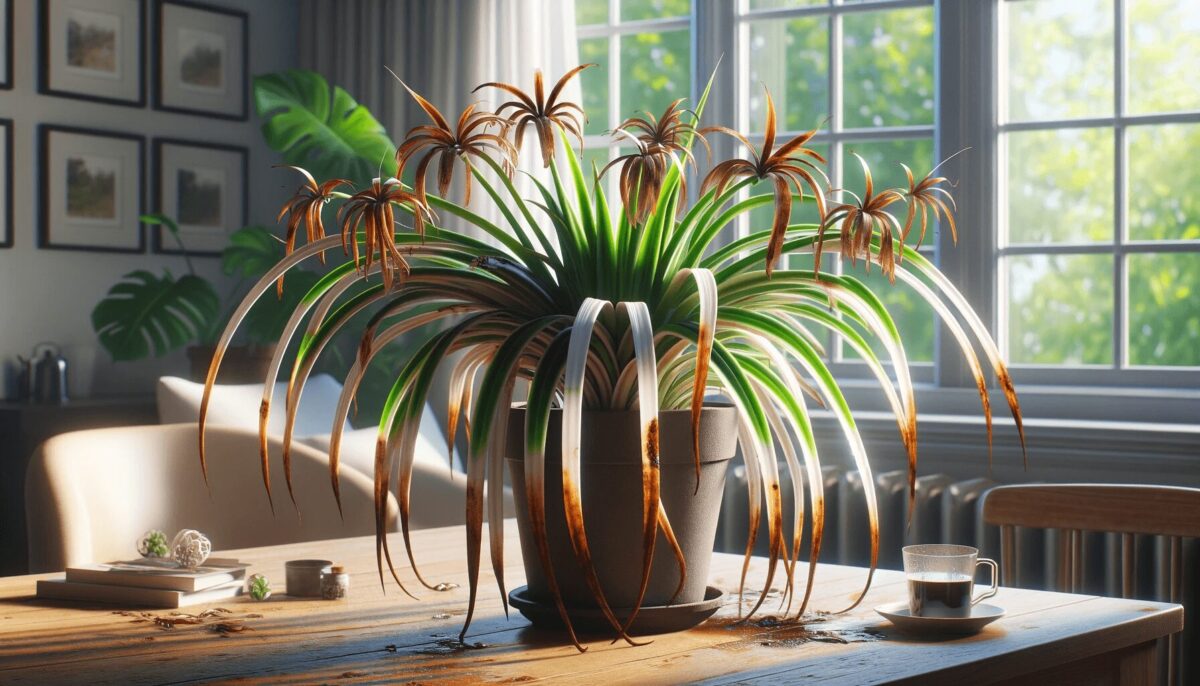Spider plants are known for their hardiness and ease of care, but they’re not immune to problems. One common issue is the browning of leaf tips. Understanding the reasons behind this can help you take the right steps to keep your plant healthy and thriving. Here, we explore the top five reasons why your spider plant might be showing brown tips and how to address each issue.
Water Quality
Spider plants are sensitive to chemicals like fluoride and chlorine commonly found in tap water. These elements can accumulate in the leaf tips, causing them to turn brown. Using filtered or rainwater for your plant can help prevent this issue.
Watering Issues
Both overwatering and underwatering can stress spider plants, leading to brown tips. Ensure that the soil is moist but not soggy, and allow the top inch of soil to dry out between waterings. Consistent watering habits are key to preventing tip browning due to moisture stress.
Low Humidity
Spider plants thrive in moderate to high humidity environments. Dry air, particularly in heated indoor spaces during winter, can lead to drying out of leaf tips. Increasing humidity around the plant, such as through misting or using a humidifier, can help mitigate this problem.
Nutrient Imbalance
Over-fertilization can lead to a buildup of salts in the soil, causing leaf tip burn. Conversely, a lack of essential nutrients can also stress the plant. Use a balanced, diluted fertilizer, and avoid over-fertilizing. Ensure the plant is receiving all necessary nutrients in appropriate amounts.
Direct Sunlight
While spider plants enjoy bright light, direct sunlight can be too harsh, leading to scorched, brown tips. Positioning your plant in a place where it receives bright, indirect light will help maintain its lush green foliage without the risk of sunburn.
In conclusion, while spider plants are generally easy to care for, the occurrence of brown tips can signal specific issues needing attention. By understanding and addressing the potential causes, such as water quality, watering habits, humidity levels, nutrient balance, and light exposure, you can effectively prevent and remedy this common problem. Caring for these resilient plants involves a balance of the right environment and attentiveness. With these insights, your spider plants can continue to thrive, adding beauty and purifying the air in your home or office. Remember, healthy plant care often involves observing and responding to the subtle cues your plants give you.


